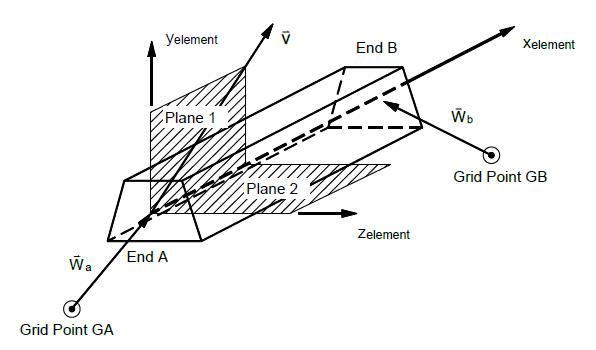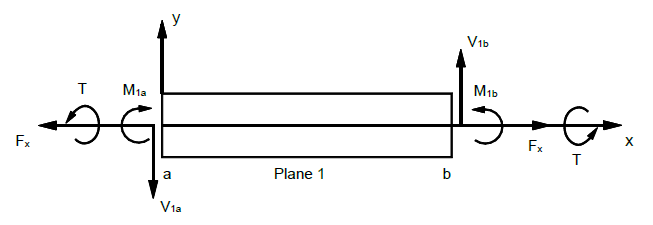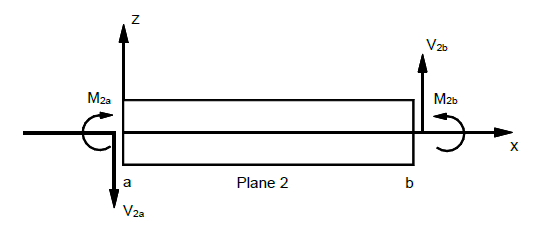Description
The CBAR entry defines a simple beam element.
Format
| 1 | 2 | 3 | 4 | 5 | 6 | 7 | 8 | 9 | 10 |
| CBAR | EID | PID | GA | GB | X1 | X2 | X3 |
Example
| CBAR | 10 | 100 | 101 | 102 | 0.0 | 0.0 | 1.0 |
Alternate Format and Example
| 1 | 2 | 3 | 4 | 5 | 6 | 7 | 8 | 9 | 10 |
| CBAR | EID | PID | GA | GB | G0/X1 | X2 | X3 |
| CBAR | 2 | 39 | 7 | 6 | 105 |
| Field | Definition | Type | Default |
|---|---|---|---|
| EID | Element identification number. | Integer > 0 | Required |
| PID | Property identification number of a PBAR entry. | Integer > 0 | Required |
| GA, GB | Grid point identification numbers of connection points. | Integer > 0 | Required |
| X1, X2, X3 | Components of vector
 , from GA, in the displacement coordinate system at GA (see Figure 1). , from GA, in the displacement coordinate system at GA (see Figure 1).
|
Real or blank | |
| G0 | Grid point identification number to optionally supply X1, X2, and X3. Direction of orientation vector is GA to G0. | Integer or blank |
Remarks
- Element identification numbers must be unique with respect to all other element identification numbers.
- If field 6 is an integer, then G0 is used. If field 6 is blank or real, then X1, X2, X3 are used.
- G0 cannot be located at GA or GB.

Figure 1: CBAR element geometry

Figure 2: CBAR element internal forces and moments (x-y plane)

Figure 3: CBAR element internal forces and moments (x-z plane)
